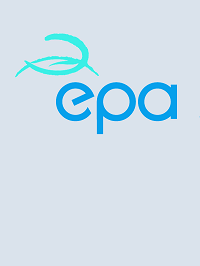Macroalgal Biomonitoring – Applying Phenolic Compounds as Biomarkers for Metal Uptake Characteristics in Irish Coastal Environments
Synthesis Report for the ERTDI-funded project: 2005-FS-35-M1
Summary: STRIVE Report 42 - Solène Connan and Dagmar B. Stengel

Metals occur naturally in sea water at low concentrations and some act as essential micronutrients for marine biota, but they may become toxic when absorbed or ingested by plants and animals at high concentrations. Despite some recent research on metal contents in seaweeds from Ireland, few data exist for Irish coastal and transitional waters. The 2003 National Environmental Monitoring Programme for Transitional, Coastal and Marine Waters. A Discussion Document by the Environmental Protection Agency of Ireland proposes the inclusion of seaweeds in an extended assessment of future monitoring programmes for metal concentrations in Ireland and recommends the monitoring of hazardous substances and contaminants, including metals, by using biomonitoring organisms such as shellfish and seaweeds. Currently no standardised monitoring protocol exists in Ireland, although some limited biomonitoring of metals using shellfish has been conducted. In this 3-year project, seasonal, spatial and inter-site variations in phenolic and metal (copper, zinc, cadmium, chromium) contents and in phenolic composition in the ecologically and economically most important intertidal seaweeds in Ireland, Ascophyllum nodosum and Fucus vesiculosus, were observed, demonstrating their suitability as biomonitors of metal contamination. The experimental approach taken in this project established a quantitative link between physiological responses in intertidal brown seaweeds and phenolic production, composition, exudation and the potential of phenolics to bind metals under natural environmental conditions. The effect of copper enrichment and its interaction with salinity, and the effect of iron and zinc contamination, were closely investigated. However, neither the intracellular phenolic content of the seaweed nor phenolic exudation could be used as biomarkers of metal contamination, whereas the cell-wall phenolic content of brown seaweeds seems promising but needs further investigation. This project has produced data on the contaminant status of selected Irish coastal and transitional waters, including sites of active seaweed harvesting by the Irish seaweed industry. Finally, some recommendations are proposed for the sampling methodology when using seaweeds as biomonitors of metal contamination, and some general comments are made on the utilisation of a series of biomonitors (seaweed, animal filter-feeders such as mussels), as well as sediment, to characterise the metal contamination of a site in more detail.